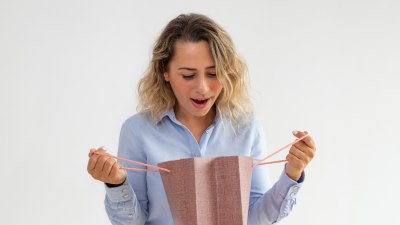The Secret Link Between Impulse Buys and That First Hint of Autumn
Exploring how the arrival of autumn influences consumer behavior and impulse buying patterns.

Image by katemangostar on Freepik
As the first hint of autumn arrives, many individuals experience a shift in their mood and behavior. This seasonal transition not only brings a change in weather but also influences various aspects of life, including shopping habits. Understanding the link between impulse buys and the autumn season requires delving into consumer psychology, the influence of weather on emotions, and marketing strategies that capitalize on these changes.
Understanding Impulse Buying
Impulse buying is a phenomenon that occurs when consumers make unplanned purchases without prior intention. It's driven by emotional responses rather than rational decision-making. Several factors can lead to impulse buys, including mood, environment, and social influences. The excitement of discovering something new, the thrill of a good deal, or simply the joy of shopping can trigger these spontaneous purchases.
The Psychological Effects of Autumn
When autumn approaches, many people begin to feel a mix of nostalgia and anticipation. The changing leaves, cooler temperatures, and the onset of holidays evoke feelings that can greatly influence spending behavior. On a psychological level, the arrival of autumn often triggers a desire for comfort and coziness—think of warm sweaters, pumpkin spice lattes, and seasonal decorations. This shift in mindset can motivate individuals to seek out products that resonate with the seasonal theme.
Seasonal Marketing Strategies
Retailers are keenly aware of the potential for increased impulse buying as autumn approaches. Marketing strategies often revolve around the emotions associated with this time of year. Brands may launch targeted advertising campaigns focusing on fall-themed products, utilizing imagery of warm colors and cozy settings. Promotions for seasonal items, such as back-to-school supplies, Halloween decorations, and fall fashion, become prevalent in stores and online, tapping into consumers' emotional states.
The Role of Nostalgia
Nostalgia plays a significant role in how we respond to seasonal changes. Autumn is a time steeped in memories for many people, evoking feelings of childhood warmth and celebration. Retailers leverage this nostalgia by showcasing products or experiences that remind consumers of past autumns. Limited-time offers for fall-themed items can trigger a sense of urgency, further leading to impulse purchases as individuals seek to recapture the feelings associated with autumn.
Climate and Consumer Emotion
The weather is another crucial factor influencing buying behavior. As days get shorter and temperatures drop, studies show a correlation between cooler weather and increased shopping frequency. The first chill in the air can spark excitement and motivate shoppers to transition their wardrobes and home decor for autumn. This change in climate can influence emotional responses, prompting consumers to indulge in impulse buys they may have resisted during warmer months.
Social Influences on Seasonal Purchases
Autumn is often associated with gatherings and celebrations, from Halloween parties to Thanksgiving dinners. These social occasions can drive people to purchase items impulsively, either to fit in with social norms or to impress friends and family. Peer influence becomes a significant factor during this season, as individuals may feel compelled to buy trendy clothing, decorations, or gifts based on the preferences of their social circles.
Shopper Behavior Insights
Research indicates that a shopper’s behavior tends to change in response to seasonal transitions. During autumn, consumers are more likely to prioritize comfort and aesthetics, seeking products that match the cozy and inviting atmosphere associated with the season. Those making impulse purchases may gravitate toward items that evoke strong feelings of warmth, nostalgia, and comfort.
The Importance of Visual Merchandising
Visual merchandising plays a pivotal role in capturing shoppers' attention and encouraging impulse buys during autumn. Retailers utilize strategic displays that highlight seasonal items, often using warm colors and enticing layouts to create a visually appealing shopping experience. Techniques such as placing seasonal products near the checkout or creating themed sections within stores can significantly impact purchasing behavior as consumers become entranced by autumnal aesthetics.
Online Shopping Trends
As online shopping continues to grow, e-commerce retailers are also adapting to the seasonal influence of autumn. Digital marketing campaigns often incorporate seasonal themes and emphasize limited-time offers to encourage impulse buying. Additionally, the convenience of online shopping makes it easier for consumers to make quick purchases at any time, heightening the risk of impulse buys as they browse autumn-inspired collections from the comfort of their homes.
The Interplay of Emotion and Shopping
Understanding the interplay between emotion and shopping is crucial for both consumers and retailers. For consumers, being aware of how emotions may influence decision-making can help mitigate unnecessary impulse purchases. On the flipside, retailers must balance effective marketing strategies that capitalize on this emotional response without manipulating their audience. Encouraging mindful shopping can foster a healthier consumer culture while still allowing brands to engage meaningfully with their customers.
Strategies to Avoid Impulse Buying
While autumn can spark the desire to indulge in impulse buying, there are strategies for consumers to avoid overspending. Creating a shopping list before heading to stores can help individuals stay focused and resist unplanned purchases. Setting a budget for seasonal shopping can also aid in managing expenses while still allowing for enjoyment of fall-themed items. Additionally, taking breaks during shopping trips can give consumers time to reassess their needs and avoid making hasty decisions.
Building Mindful Shopping Habits
As the excitement of autumn approaches, fostering mindful shopping habits can lead to more intentional purchases. By being aware of emotional triggers and seasonal influences, individuals can learn to differentiate between wants and needs. Practicing gratitude for what one already has can also diminish the urge to buy impulsively, promoting a mindset of appreciation rather than consumption.
The secret link between impulse buys and the first hint of autumn is a complex interplay of psychology, emotion, and marketing. As consumers navigate this season, understanding the factors that influence impulse purchasing can lead to more thoughtful choices while still embracing the joy and excitement that autumn brings. Retailers will continue to find innovative ways to entice shoppers, but conscious consumers can enjoy the season without falling into the trap of unplanned spending.











